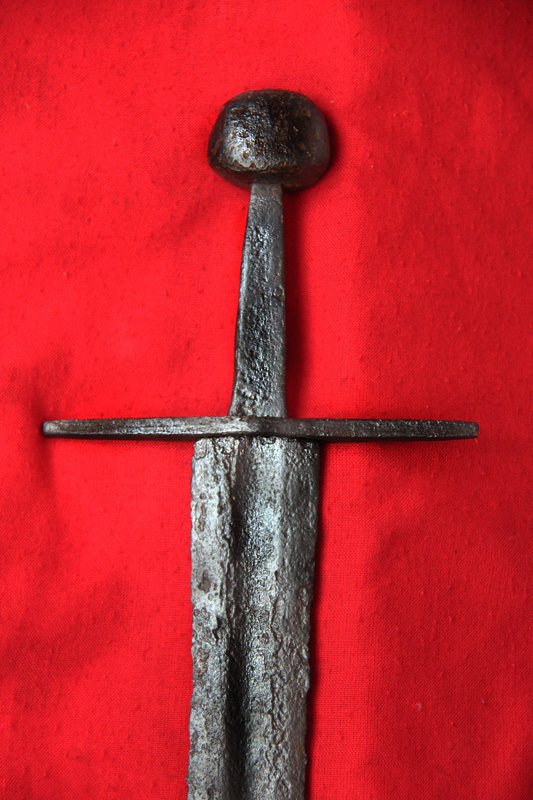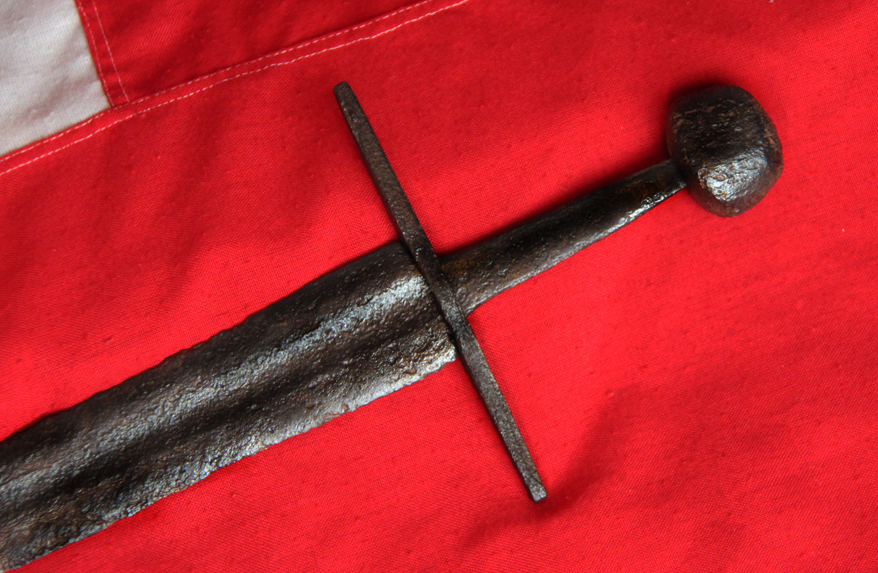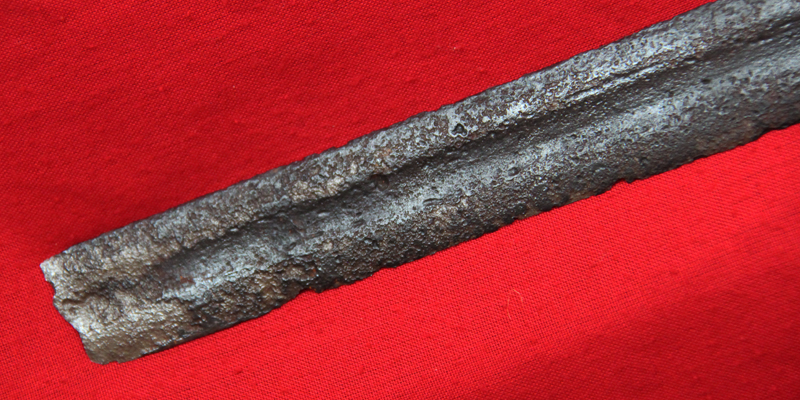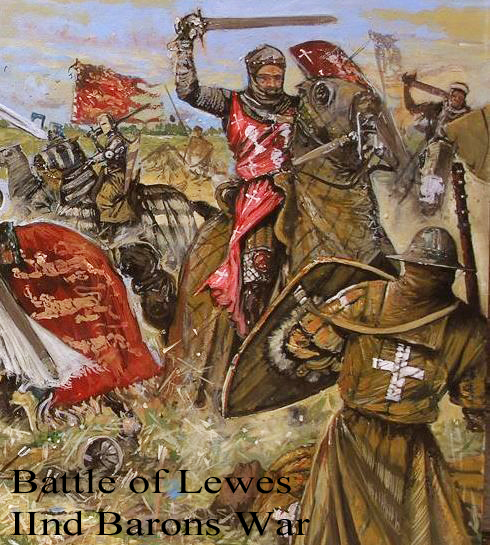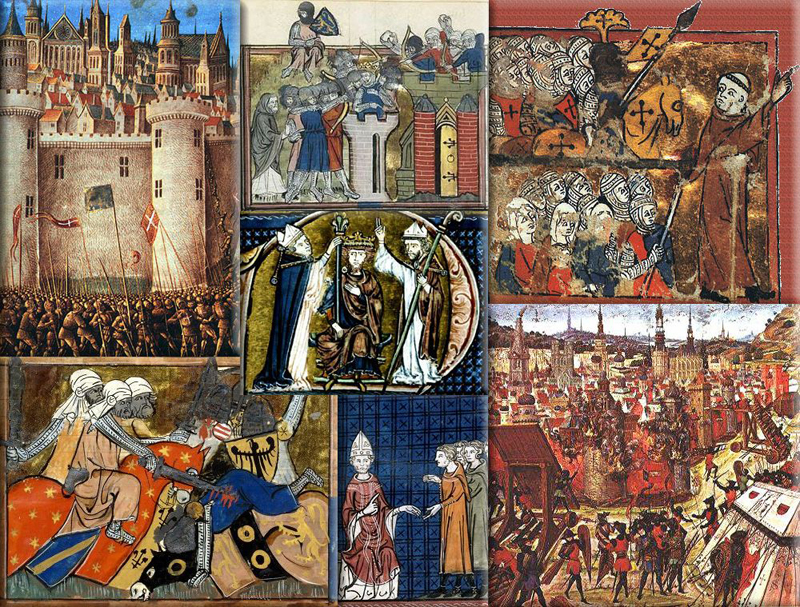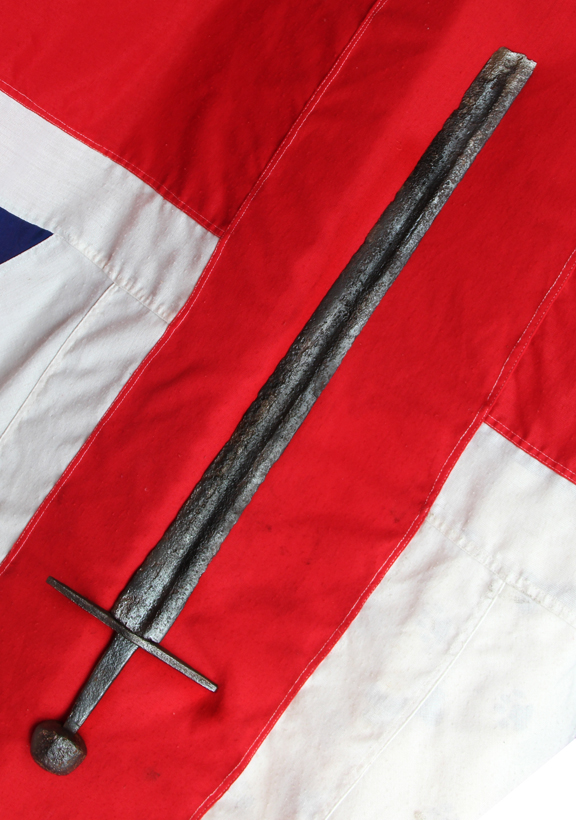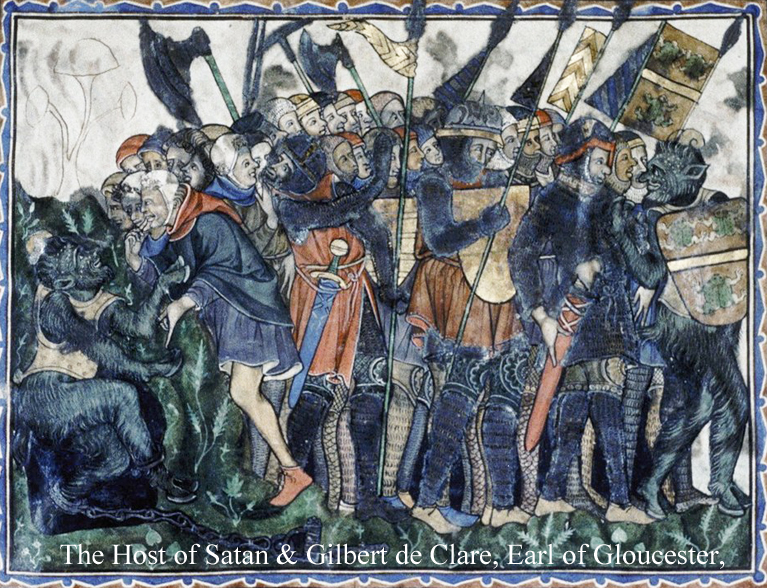A Fabulous, Original, High Middle Ages, Museum Piece. A 13th Century Medieval Knightly Sword of the Henry IIIrd and Simon de Montfort Period, Made And Used By a Knight of The IInd Baron's War Era, the Battle of Lewes in 1264. Oakshott Typology Type XII
What a fabulous, original, High Middle Ages Medieval ‘statement piece’ for any collection or decor. In the world of collecting there is so little remaining in the world from this highly significant era in European and British history. And to be able to own and display such an iconic original representation from this time is nothing short of a remarkable privilege.
A wonderful example piece, from the ancient knightly age, of the IInd Baron’s War era between Simon de Montfort, Earl of Leicester, and King Henry IIIrd.
The battle site is still not completely agreed upon, but part of the conflict was recorded at Offham hill, and this is was just 4 miles south of our farm, Thousands of the protagonists soldiers were supposedly camped within our grounds, but at present it is not certain for which side they fought. Our farm was originally part of Earl Godwin’s estate, later more famously known as King Harold, who also supposedly camped here on our land immediately before his disastrous Battle of Hastings in 1066 {actually fought inland in the town, that is now called Battle, and not at Hastings at all}. A Canadian funded documentary was filmed here recently.
Effectively, from this time of around eight hundred years ago, from a collectors point of view, nothing else significant survives at all, only the odd small coin or very rarely seen, and almost impossible to own, carved statuary. Medieval 'Oakeshott type XII' Single-Handed Sword
13th century. Oakeshott is the standard that describes and by which defines Medieval swords, their types, and periods of use. A superb original knightly double-edged iron sword with broad, flat, evenly tapering blade, the blade tending to widen perceptibly below the hilt, and the fullers are well defined, extending from below the guard for more than half of the blade's length, the blade's cross-section is of of straight lenticular design, the style of guard one of the most common of the category, i.e. a not exaggeratedly long and straight, with flattened cross-section, the pommel is a handsome thick rhomboid piece, fitted with fastening central rivet. The blade has been broken in combat and lost around quarter of its original length.
See Oakeshott, E., The Sword in the Age of the Chivalry, London,1964 (1994).
A fine example piece, from the ancient knightly age, from almost 800 years past. Although this sword is now in an obvious ancient, and historical, russetted condition, with some elements lacking, every item made of iron from this era, such as the rarest of swords and daggers, even in the Royal Collection, are in this very same state of preservation.
Henry III (1 October 1207 - 16 November 1272), also known as Henry of Winchester, was King of England, Lord of Ireland, and Duke of Aquitaine from 1216 until his death. He was the fourth king of the House of Plantagenet. The son of King John and Isabella of Angouleme, Henry assumed the throne when he was only nine in the middle of the First Barons' War. Cardinal Guala declared the war against the rebel barons to be a religious crusade and Henry's forces, led by William Marshal, defeated the rebels at the battles of Lincoln and Sandwich in 1217. Henry promised to abide by the Great Charter of 1225, which limited royal power and protected the rights of the major barons. His early rule was dominated first by Hubert de Burgh and then Peter des Roches, who re-established royal authority after the war. In 1230, the King attempted to reconquer the provinces of France that had once belonged to his father, but the invasion was a debacle. A revolt led by William Marshal's son, Richard Marshal, broke out in 1232, ending in a peace settlement negotiated by the Church.
Later on the Henry's reign came The Second Barons' War (1264-1267) it was a civil war in England between the forces of a number of barons led by Simon de Montfort against the royalist forces of King Henry III, led initially by the king himself and later by his son, the future King Edward I. The war featured a series of massacres of Jews by Montfort's supporters including his sons Henry and Simon, in attacks aimed at seizing and destroying evidence of Baronial debts.
The Battle of Lewes was one of two main battles of the conflict known as the Second Barons' War. It took place at Lewes in Sussex, on 14 May 1264, just around fourteen miles from our Brighton shop, and four miles south of our farm North of Lewes. It marked the high point of the career of Simon de Montfort, 6th Earl of Leicester, and made him the "uncrowned King of England". Henry III left the safety of Lewes Castle and St. Pancras Priory to engage the Barons in battle and was initially successful, his son Prince Edward routing part of the baronial army with a cavalry charge. However Edward pursued his quarry off the battlefield and left Henry's men exposed. Henry was forced to launch an infantry attack up Offham Hill where he was defeated by the barons' men defending the hilltop. The royalists fled back to the castle and priory and the King was forced to sign the Mise of Lewes, ceding many of his powers to Montfort. After a rule of just over a year, Montfort was killed by forces loyal to the King in the Battle of Evesham.
The swords of this era have the following characteristics. The fuller is well-marked and occupies two-thirds to three-quarters of the blade-length. It often starts on the tang within the hilt, and may be double or treble. The grip is a little longer than in the preceding types XI, X etc, averaging about 11.5cm. The tang is generally flat with almost parallel sides, or swelling a little in the middle. The cross can be of almost any style, though a short, straight one is most common, like in this case. The pommel, too, can be of any type though the thick disc with strongly bevelled edges (Type I) predominates. Here however the specimen shows similarity with a sword represented in a sculpture from the cathedral of Bamberg, dated at 1250 AD Douce Apocalypse, c. 1265-70. The dragon, who is Satan, comes forth again (Rev. 20:7). One contemporary painting in the gallery is of the rebel Earl of Gloucester, depicted with his alleged ally, Satan. Among the flags of the host of Satan is that of Gilbert de Clare, Earl of Gloucester, who had opposed Henry III. Usually the type XII presents a broad, flat, evenly tapering blade, generally with a good sharp point and tending to widen perceptibly below the hilt.(Oakeshott, 1964 (1994), p.42). Weight 1.2 kg, 73cm (28 3/4" inches long overall).
The Oakeshott typology is a way to define and catalogue the medieval sword based on physical form. It categorises the swords of the European Middle Ages (roughly 11th to 16th centuries1) into 13 main types, labelled X through XXII. The historian and illustrator Ewart Oakeshott introduced it in his 1960 treatise The Archaeology of Weapons: Arms and Armour from Prehistory to the Age of Chivalry.
The system is a continuation of Jan Petersen's typology of the Viking sword, which Petersen introduced in De Norske Vikingsverd ("The Norwegian Viking Swords") in 1919. In 1927, the system was simplified by R. E. M. Wheeler to only seven types, labelled I through VII. Oakeshott slightly expanded the system with two transitional types, VIII and IX, and then he started work on his own typology.
Among the many reasons for his typology, Oakeshott found date classification unreliable during his research. He wrote that the weapons' dates of manufacture, use, and retirement have been greatly obscured by trade, warfare, and other various exchanges combined with the weapons' own longevity.
The High Middle Ages, or High Medieval Period, was the period of European history between c. 1000 and c. 1300; it was preceded by the Early Middle Ages and followed by the Late Middle Ages, which ended c. 1500 according to historiographical convention. Key historical trends of the High Middle Ages include the rapidly increasing population of Europe, which brought about great social and political change from the preceding era, and the Renaissance of the 12th century, including the first developments of rural exodus and urbanization. By 1350, the robust population increase had greatly benefited the European economy, which had reached levels that would not be seen again in some areas until the 19th century. That trend faltered in the early 14th century, as the result of numerous events which together comprised the crisis of the late Middle Ages—most notable among them being the Black Death, in addition to various regional wars and economic stagnation.
Every single item from The Lanes Armoury is accompanied by our unique Certificate of Authenticity. Part of our continued dedication to maintain the standards forged by us over the past 100 years of our family’s trading, and thus, it is a lifetime guarantee.
As is always usual, the wooden grip section perished centuries past. As almost every iron weapon that has survived today from this era is now in a similar russetted condition, just as this one, because only the swords of kings, that have been preserved in national or Royal collections are today still in a relatively good state and condition. We will include for the new owner a complimentary wooden display stand, but this amazing ancient artefact of antiquity would also look spectacular mounted within a bespoke case frame, or, on a fine cabinet maker constructed display panel. Our artisans can accomplish this if required.
Code: 22937
10925.00 GBP


